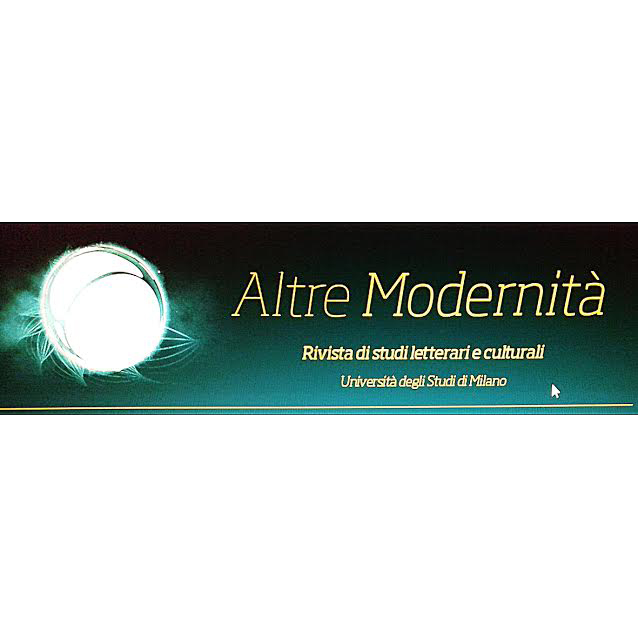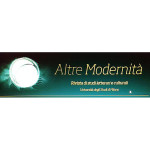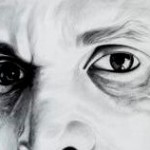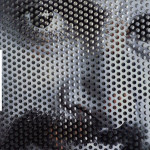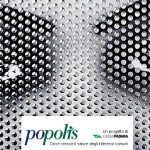NICOLETTA VALLORANI, “Sidelong THinking. Disobedient Geographies and Subaltern Cultures”, Altre Modernità. Rivista di Studi Letterari e culturali, 16, November 2016
LINK RIVISTA: http://riviste.unimi.it/index.php/AMonline
The photographic and artistic project I Càrmeni. Ritratti improbabili (Mario De Carolis 2015, <www.mariodecarolis.it>) specifically develops this tendency combining it with an unusual version of the process of mimicry. Focussing on the neighbourhood of San Faustino, in Brescia (Italy), the project arises from the exploration of an urban microcosm that has gradually developed into a multicultural environment where a number of different ethnic groups live side by side, mutually influencing each other. After becoming a familiar presence in the neighbourhood, the artist shot a number of close-ups of the people dwelling in the area who had come to trust him as a friend. The photographic portraits were then printed on sheets of drilled aluminium and laid on plexiglas mirrors. A video is available here:
<https://www.youtube.com/results?search_query=i+carm%C3%A8ni-docucity>.
Viewing the portraits, what happens is that the viewer sees the portrait but also his/her own reflection. The two faces combine, producing a new image, the temporary combination of differences, symbolically evoking the fluctuating and unpredictable combination of two histories, cultures, experiences and, more often than not, ethnicities. De Carolis claims that his main artistic reference was the very famous painting by Antonello da Messina, Annunciata di Palermo (1476): as in that work, the object of his representation is someone who is not there, the angel in the case of Antonello da Messina and the new transcultural identity in contemporary Europe in his photographic portraits. With no full awareness of this, the artist has produced a work that sticks to the theoretical approach of the most recent findings in the field of postcolonial and decolonial criticism and symbolically translates a development of Western identity constantly transformed by the mosaic of local and individual context it happens to operate in5. From a critical standpoint, what is at issue here is the notion of reflection as proliferation – not mere duplication – of mirror images, which easily combines with the concept of identity as an interaction between colonizer and colonized producing a new third (and then fourth, and then fifth …) identity that later on will combine, in turn, with other “pure” identities, determining new forms of hybridization.
Quite obviously, De Carolis’s project emphasizes the idea of a performative identity as a way to stress the notion of singularity and multiplicity that is intended not as opposite but as alternative to the traditional (and Western) dichotomic structure of knowledge.
More importantly, this kind of artistic representation is able to show how persistently the condition of being a Westerner has determined the impossibility of conceiving of the Other and ourselves as different without reverting to the kind ofhierarchical thought defining our culture as the only authorized one. Based on the sharp distinction between the one and the Other, this line of thought is no longer feasible, and is being replaced by a mechanism of fragmented and multiple reflection tracing new geographies, islands rather than continents, places marked by their singularity though needing to relate to each other in archipelagos.
Il progetto artistico e fotografico I Càrmeni. Ritratti improbabili ( Mario De Carolis 2015) sviluppa nello specifico questa tendenza combinandola con un’insolita versione del processo di “mimicry”, il rispecchiamento che nello straniero cerchiamo di noi stessi. Concentrandosi sul quartiere di San Faustino a Brescia (Italia), il progetto nasce dall’esplorazione di un microcosmo urbano che si è gradualmente sviluppato in un ambiente multiculturale dove diversi gruppi etnici vivono uno accanto all’altro influenzandosi a vicenda. Dopo essere diventato una presenza familiare nel quartiere, l’artista ha scattato alcuni primi piani degli abitanti della zona, tutte persone che erano arrivate a considerarlo un amico .
I ritratti fotografici sono stati poi stampati su fogli di alluminio perforato e stesi su specchi di plexiglas. Un video è disponibile a questo indirizzo: <https://www.youtube.com/results?search_query=i+carm%C3%A8ni-docucity>.
Guardando le foto, ciò che succede è che lo spettatore vede il ritratto realizzato dal fotografo ma anche il suo riflesso. I due visi si combinano producendo una nuova immagine, la combinazione temporanea di differenze, che evocano simbolicamente l’interazione fluttuante e imprevedibile di due storie, due culture, due esperienze e, incredibilmente spesso, due etnie. De Carolis afferma che il suo principale riferimento artistico è stato il famosissimo quadro di Antonello da Messina, Annunciata di Palermo (1476): come in quel caso, anche qui l’oggetto della sua rappresentazione è qualcuno che non c’è, l’angelo nel caso di Antonello da Messina e la nuova identità transculturale nell’Europa contemporanea nei suoi ritratti fotografici. Senza essere del tutto consapevole di farlo, l’artista ha prodotto un lavoro che rimane fedele all’approccio teorico delle più recenti scoperte nel campo della critica postcoloniale e decoloniale e simbolicamente traduce uno sviluppo dell’identità occidentale costantemente trasformata dal mosaico del contesto locale e individuale in cui capita di operare. Da un punto di vista critico ciò che emerge qui è la nozione di riflesso come proliferazione – non semplice duplicato – di immagini allo specchio, un’idea che si combina facilmente con il concetto di identità come interazione tra il colonizzatore e il colonizzato producendo una nuova terza (e poi una quarta , una quinta…) identità che più avanti si combinerà a sua volta con altre identità “pure”, determinando nuove forme di ibridazione .
In tutta evidenza, il progetto di De Carolis enfatizza l’idea dell’identità performativa come un modo di accentuare la nozione di singolarità e di molteplicità, intesa non come opposto ma come alternativa alla tradizionale (e occidentale) struttura dicotomica della conoscenza.
Soprattutto, questo tipo di rappresentazione artistica è in grado di mostrare come, in modo persistente, la condizione di essere un Occidentale ha determinato l’impossibilità di concepire l’Altro e noi stessi come diversi senza tornare al tipo di pensiero gerarchico che definisce la nostra cultura come la sola degna di essere considerata tale.Basata su una netta distinzione tra l’Uno e l’Altro, questa linea di pensiero non è più percorribile e viene progressivamente sostituita con un meccanismo di riflessione in frammenti, un processo che traccia nuove geografie, isole piuttosto che continenti, luoghi segnati dalla loro singolarità sebbene bisognosi di relazionarsi tra di loro in arcipelaghi.
Traduzione di : Patrizia Lazzari

